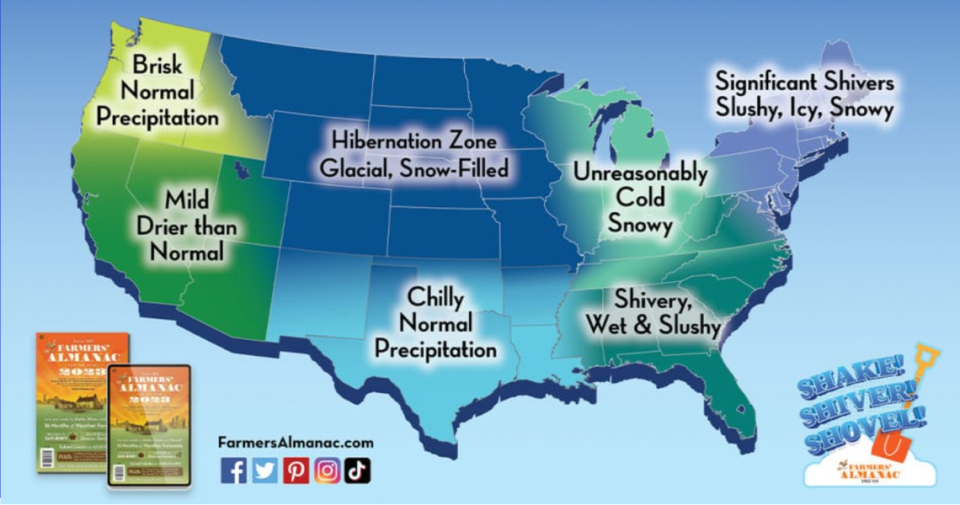In dead of summer, Farmers’ Almanac says to get ready for a ‘brisk’ winter, Idaho
Is mid-August too soon to think about snow, hot cocoa and fuzzy socks? Perhaps. But it’s not too early for Farmers’ Almanac, which recently published its long-range forecast for winter 2022/23.
And after some typically grueling summer months that have seen Boise hit 100 degrees on 17 different occasions — with several weeks of heat still on the way — the thought of being able to walk outside without melting is likely an inviting one.
Farmers’ Almanac publishes its winter outlook every year with fairly uncanny accuracy, using a secret formula known only by a single person under the pseudonym Caleb Weatherbee. The longtime weather forecasting website and publication claims that 80-85% of its forecasts are accurate.
Farmers’ Almanac’s 2021/22 winter weather forecast had a 94.4% accuracy rate for whether a region would get more or less precipitation, but only a 50% accuracy rate on the average temperature.
For the 2022/23 winter outlook, Idaho is grouped in the Pacific Northwest region with Washington and Oregon. It’s looking like a fairly average, if not slightly colder than normal, winter for the Gem State.

Regarding rain and snow, the forecast states that “the Far West and the Pacific Northwest will see about-normal winter precipitation.”
For December through February, Boise averages 3.92 inches of precipitation — one inch of precipitation is equal to about 13 inches of snowfall, according to the National Severe Storms Laboratory. Snowfall in Boise averages around 20 inches per year.
Boise averages its first 1-inch snowfall on Dec. 5 and has had a white Christmas in five of the past 10 years, but none since 2017.
Temperature-wise, Farmers’ Almanac says that “the Pacific Northwest will see brisk/cool conditions, and the Southwest will be the mild area of the country, with near-normal winter temperatures.”
The average winter high temperature in Boise is 38 to 45 degrees, while the average low is 24 to 28.
Nationwide outlook
One of the more significant winter storms of the season is expected in the first week of January across the Rockies and Great Plains, with snow reaching as far south as Oklahoma and Texas, according to the almanac.
Shortly after, from Jan. 16 to 23, Farmers’ Almanac predicts heavy rain and snow across the eastern two-thirds of the United States and an outbreak of arctic air that could drop temperatures as low as 40 below zero.
It finally will warm up near the end of March with gusty winds, thunderstorms and the last few snowstorms of the season sweeping across the nation, the publication says.

